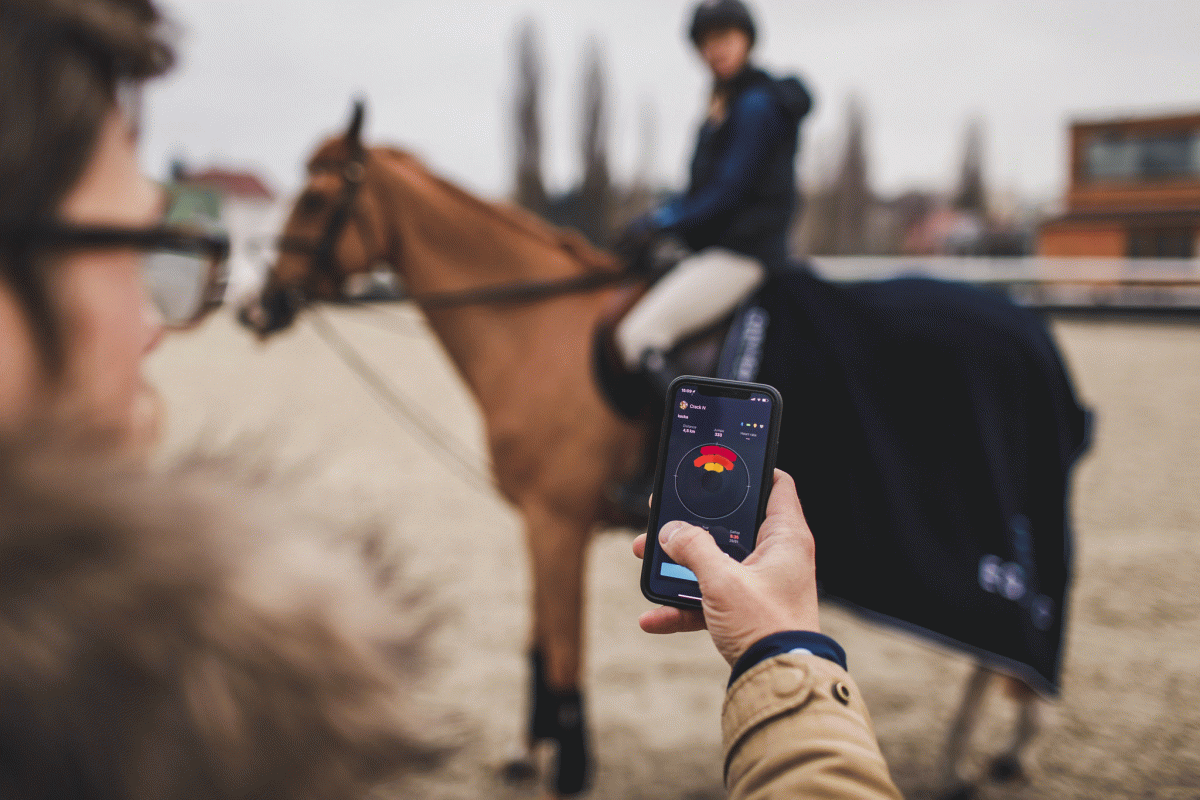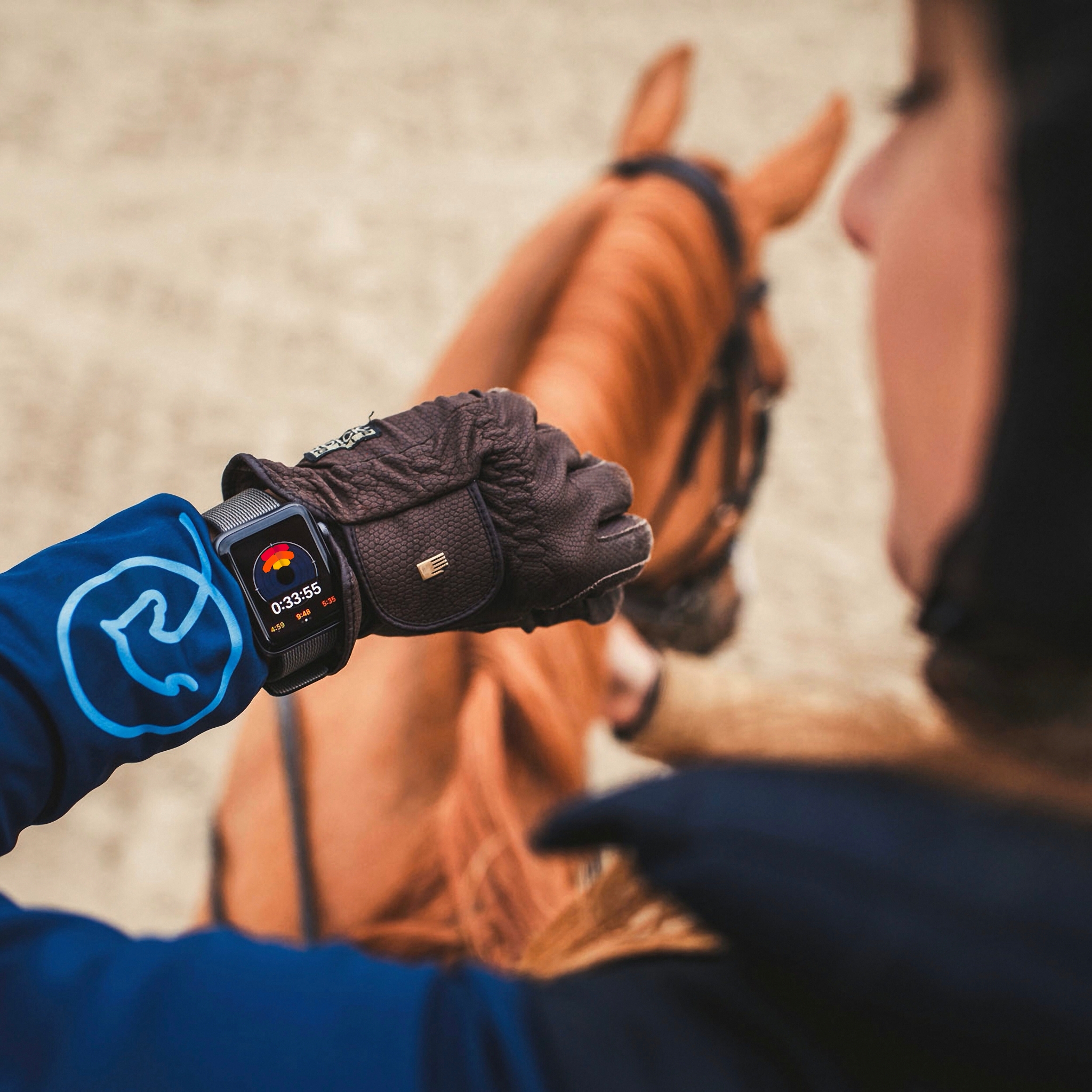
To teach a horse to carry themselves in a proper balance is a lengthy, long-term task requiring many hours of patient work. To help you with a balanced workload, EQUIMO has developed helpful graphics showing you your sessions' symmetry.
Our horseshoe graph and its symmetry rings show you a couple of essential values:
These numbers tell you if you equally burden your horse's left and right sides. Some riders use this as a mere controlling function because they naturally ride equally to left and right. However, many riders are surprised when they see their results because they may not be as even as the riders expect them to be. One of the main reasons is that both horses and riders feel more comfortable moving either to the left or right. In horses, you can liken it to the left- and right-handedness. If a horse is, for example, right-handed and has a more comfortable movement to the right, the rider may unconsciously prefer this direction.
Then there comes the rider themselves. If they feel more comfortable in one direction, either because of a pathological, physical, or mental reason, they may diminish the time spent in a less comfortable direction.

Unequal burdening of the horse's body may lead to health problems or even pain, and it can become a virtuous circle. Therefore, it is essential to control your movement's evenness to avoid problems and lengthy health issues and support the natural balance of your horse's body.
Another way of using your symmetry information is within rehabilitation. Suppose your vet or other specialist gives you a precise time frame of your horse's workload. In that case, your EQUIMO analysis provides information to help you stick to this time frame, and therefore stick to your rehabilitation plan.
Last but not least, it is vital to watch your symmetry after an exhausting session. If you have jumping training and you realize you have cantered (and jumped) way more to one direction, you know you need to check your horse if their ligaments are okay, you know that you need to watch out for possible swellings in the morning and that you should take it easy the next day. And what is more, you will pay closer attention to how you jump next time, so you do not overburden one side of your horse again.
Many riders declare the horseshoe graph to be one of their favorite EQUIMO features. The symmetry rings help them adjust their horses' long-term workload and make it more balanced, which is the foundation for an easily ridden and happy horse.
Symmetry rings displaying the balance of a session - yellow is for walk, orange for trot, and red for canter:
In the first picture, you can see a relatively balanced session.
In the second picture, you see an overly unbalanced session.
If you often provide unbalanced sessions, your horse may, as a result, develop uneven muscles, which lead to an unbalanced body and problems with the motion system.